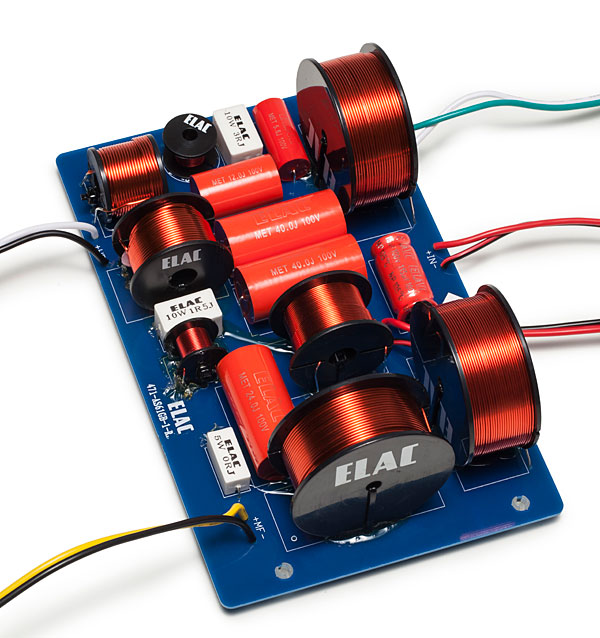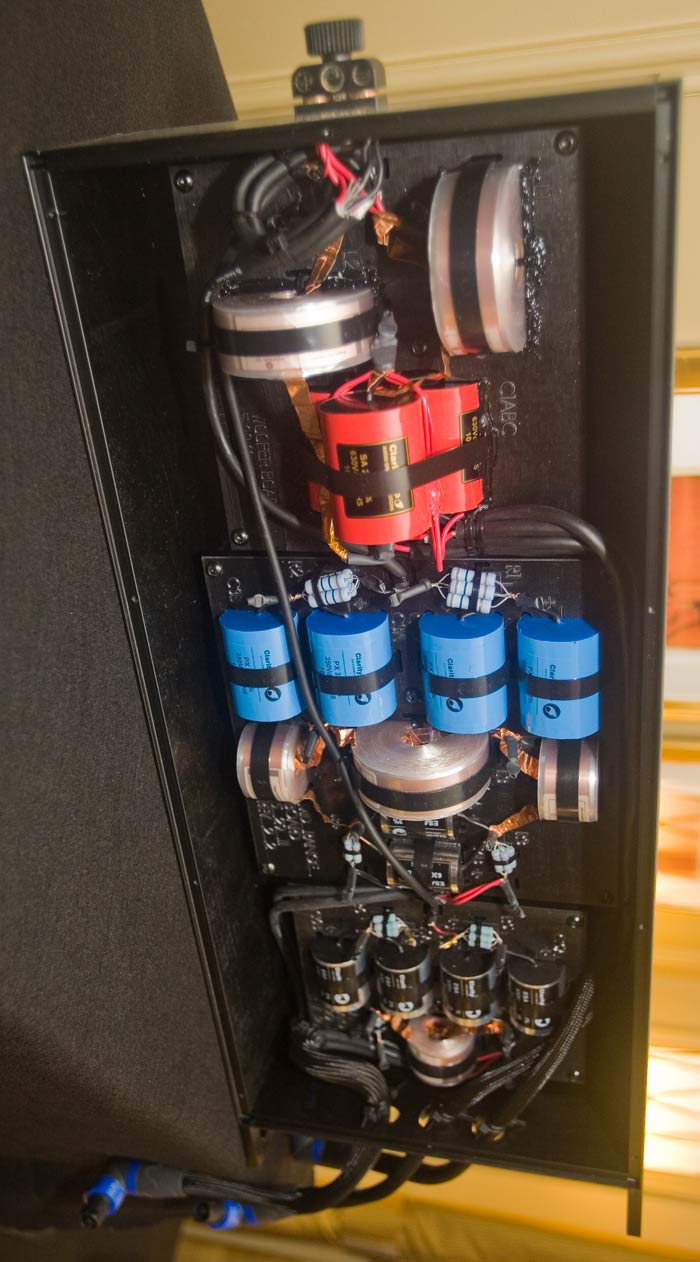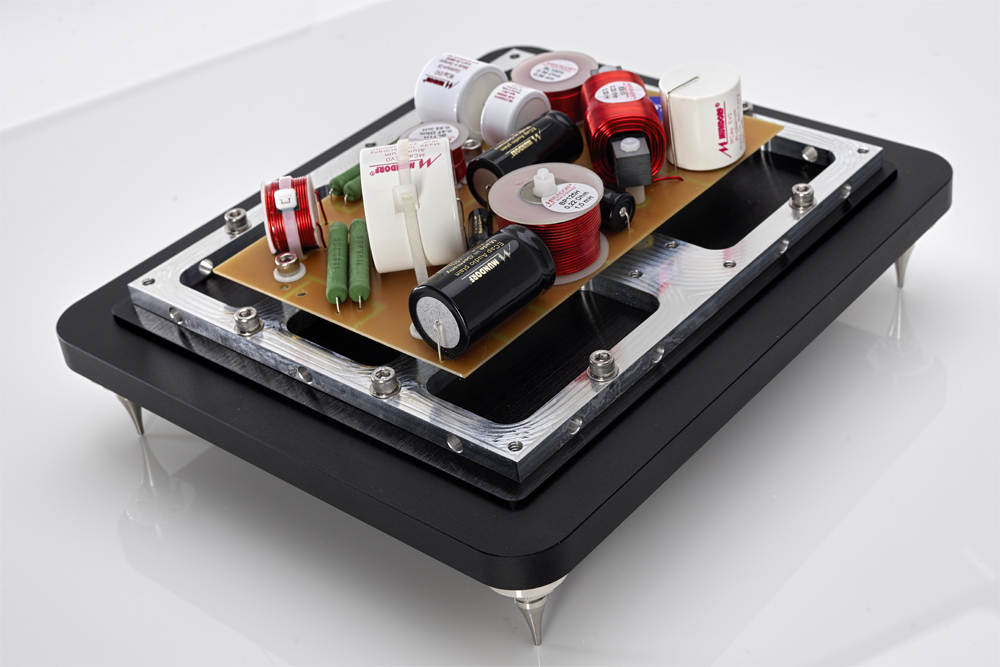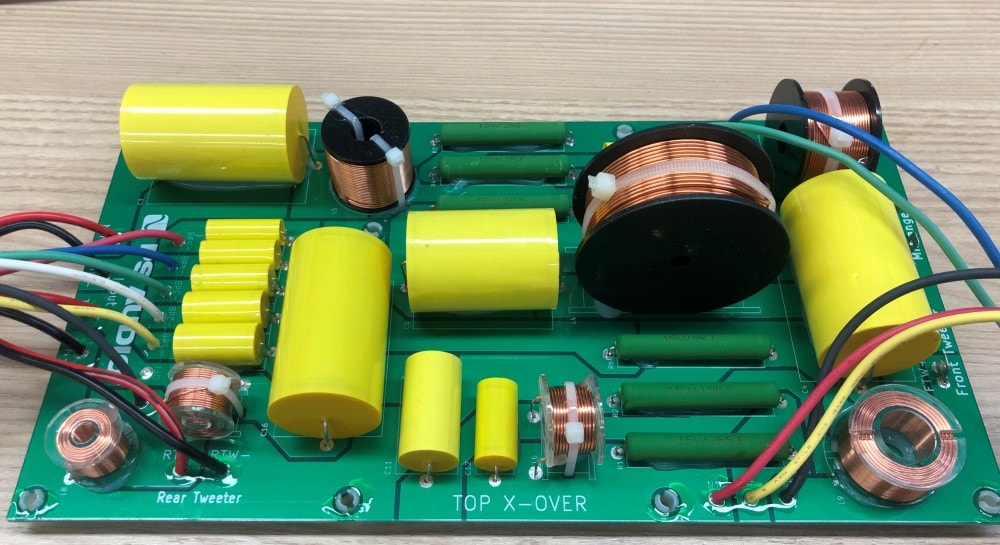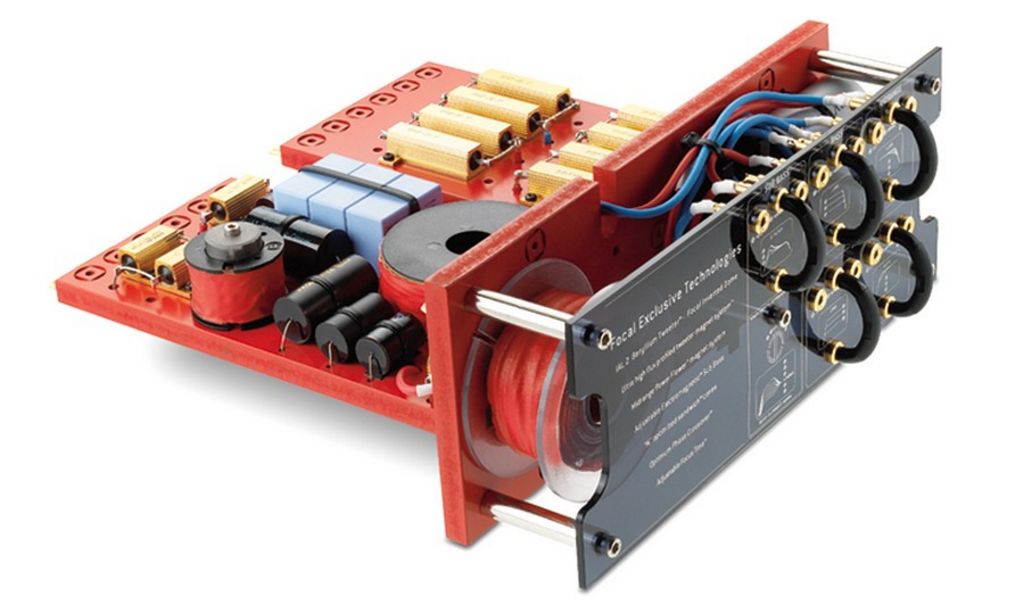@kota1 as I've said before companies like Sony, Yamaha, Harmon and the like can produce anything they want as far as quality tech. I bet someone like you could get someone like the @thespeakerdude to point you in a direction to make a top quality center speaker that you would never get access to otherwise. I would give a lot to have access to experimental prototypes (or notes) that these companies build that will probably be sold in 5 years from now. Of course we know he can't give you direct company info but he can point you in the right direction. Just saying.
Powered speakers show audiophiles are confused
17 of 23 speakers in my studio and home theater systems are internally powered. My studio system is all Genelec and sounds very accurate. I know the best new concert and studio speakers are internally powered there are great technical reasons to design a speaker and an amp synergistically, this concept is much more important to sound quality than the vibration systems we often buy. How can an audiophile justify a vibration system of any sort with this in mind.
OP, looking carefully at the Stereophile measurement plots I think the issue is that the H and V windows are entirely different. Stereophile uses +- 90 degrees horizontally but a +- 15 degree window for vertical measurements. Under these conditions the natural tweeter roll off at 30 or more degrees won’t be visible in the vertical plots. If the GR research video uses the same windows then the same issues will apply. Normally in the vertical domain speakers perform better in the frequency domain with higher order filters because there's less destructive interference. |
@erik_squires - what time mark in the video. I looked at a few plots on another video and noted strange off axis. |
@thespeakerdude Sorry my friend, I don’t care enough about this video to go looking again. If I assume he’s using the same differences Stereophile uses in charting off-axis response then his plots make a lot more sense. The dip at the crossover region in the vertical plots is quite common, though I seem to remember a Tekton stand mount with absolutely horrible vertical response plots. If anyone is interested in comparing vertical FR with different speakers. |
@erik_squires it seems odd to me that speakers don't do frequency plots like microphone plots showing off axis coloration at different frequencies. The importance is just the same, with microphones generally the longer the polar pattern the poorer the off axis colorations are and that is very important to the overall sound depending on the acoustics of the room and where there are other off axis noises. It is the same for speakers poor off axis coloration that bounces off a wall is just the same as a microphone that hears poorly from the side. |
@erik_squires I feel the same about the video :-). If it's the dip I think you mean that is likely just the stacked two way dip. |
@donavabdear this is a heat map distribution plot. It provides a lot more detail than what you are likely used to with microphones. Not the easiest to read. This is a 2 way vertical distribution:
|
If you look at the pic of my system I have the Paradigm matching active CC below the screen and the passive Paradigm CC above the screen (active would be too heavy for a ceiling mount). When you sandwich a big screen between two CC’s like this the sound seems like it is coming from the center of the screen. @thespeakerdude is limited to cutting and pasting from other websites like his graph here, maybe he can cut and paste a picture of a CC, that would be impressive. The guy couldn’t even recommend a system with a $200K budget, if you feel like having him "point" somewhere I think you will be lost in 60 seconds LOL.🤡 |
@kota1 for reasons only known to you you have issues with me. Feel free to direct message me and rant all you want. Be respectful and don’t make your issue everyone else’s issue as you are doing. It is disrespectful to everyone else here. Only you can make the actions of not making your beef everyone else's problem. |
@thespeakerdude lots of plots even polar patterns about speakers and SPL /directivity but not frequency polar patterns what could be more important. I think it shows how many poor crossovers there has been historically that the main plots on speakers is SPL. Even the few frequency polar patterns I've seen with speakers rarely show anything in the back of the speaker, if the sound coming out of the back of a speaker is off then the sound in the room will not be what it should in the important reverbs and ambiences.I often say microphones and speakers are the same, it's true and this little note is because microphones are much more scientific and not marketing driven. If speakers had a single point source the measurements would look just like microphone polar patterns and speaker manufacturers would be held more accountable. |
@kota1 "Gone in 60 Seconds " was a big movie we shot in Long Beach Ca for nearly 3 months at night and about 2 months in other locations, it was very grueling. I think @thespeakerdude is for real, I don't know the audiophile world yet but I do know the physics of sound and he gets that right. I saw your thread on sound measurements, curious as to why so much info on SPL and so little info given by way of frequency polar patterns? |
The heat graph I posted is a frequency polar pattern graph.
Note the graph legend on the left. It goes from 180 degrees at the top (backwards) to 0 in the center (straight forward) and to -180 degrees on the bottom (backwards again).
But the consumer market is not the professional market. I doubt any consumer speaker manufacturer supplies a heat graph like the one I posted. They seem to try their hardest to supply as little information as possible. That graph is from an independent review site. Compare that to literature from a professional speaker manufacturer: |
They seem to try their hardest to supply as little information as possible. What are you talking about? You have supplied 0 information about your system, your speakers. any possible creds and now you wanna complain about providing information. I got a great idea, lets start a speaker company and refuse to disclose how we are different.😮 I just threw a dart at Paradigm and look how much info is available on just this one speaker. Do you even own a speaker? EVERY company lists competive advantages of their brand everywhere. You must never have shopped for speakers yet.🤡 |
I do appreciate the endorsement, unfortunately some people are far more interested in looking right when on the Internet, than being right. Nothing interferes with that more than someone competent participating, especially when they don't raise issues that are controversial. Quite a lot of projection going on though. |
Nothing interferes with that more than someone Constantly arguing and making up stuff that they can’t back up. My creds are posted in my virtual system along with my in room FR measurements, time to put up or ......🙄🤡 @donavabdear , you posted your system, do you know how to post your FR graph?
|
| Post removed |
@secretguy what is a CJ? Whatever it means this thread is getting weird. |
We are in a thread on active speakers and thought @lonemountain post was spot on. @donavabdear-to get back on track audition some active speakers and post your experience. I have shared some candidates, Brad has shared some strategies of all things being equal, go active, now it is up to you and your $200K budget. Any status on the BHK? I just changed up my system a bit and posted in the other thread on atmos. |
Tomorrow I’m ordering the DSP equipment for my Genelec system the people at Sweetwater said my Protools MTRX could do just as good of job but it doesn’t. The crossovers in the Genelec "The Ones" are active so they are programable, this opens up the ability for the amps to drive the drivers differently at low levels among other things. This is from the Genelec site Active crossover operating at low signal levels.
Audio electronic crossovers allow to split the audio signal into separate frequency bands that can be separately routed to individual power amplifiers which then are connected to specific transducers optimized for a particular frequency band. Active crossovers come in both digital and analogue varieties. Genelec digital active crossovers include additional signal processing, such as driver protection, delay, and equalization. Genelec analogue active crossover filters contain electronic components that are operated at low signal levels suitable for power amplifier inputs. This is in contrast to passive crossovers that operate at the high signal levels of the power amplifier’s outputs, having to handle high currents and in some cases high voltages. In a typical 2-way system the active crossover needs two power amplifiers — one for the woofer and one for the tweeter. The active crossover design offers multiple benefits:
Using the active approach enables frequency response adjustments and optimization of the full loudspeaker system, placed in various room environments, without expensive external equalizers. The end result is a simpler, more reliable, efficient, consistent and precise active loudspeaker system. |
Ya, I don't know why I didn't think of crossovers as moving and changing per impedance, frequency, amplitude. I never read that part of the documentation of the Genelecs, I never had that thought. Again if a speaker had an active crossover that changed per the electronic principles of the way the amp looks at the driver and a speaker crossover that doesn't which one is better? Hello McFly!! What an obvious question it's why the more I work on the Genelecs the better they get. Before and after graph would be great but there will never be an after graph for me this is more of a journey than a destination. |
I do not buy Active speakers. Sorry. The active part gets broken well before the speakers do, and often the expense pushes them into the parts bin. Also, the majority of "Active" speakers are powered with cheap D-Class amps that don't work very well. I might change my mind if the active speakers come with replaceable amplifiers that can be upgraded. |
The information linked is not stating different operation at low levels. It is stating that the analog portions of the active circuit use low signal levels as opposed to "speaker" levels. w.r.t. Using the Genelec software, don't you have the Lyngdorf incorporated in your Genelec system? GLM Grade will have better tools for analysis of individual speakers allowing you to better tune their position and if you incorporate acoustics, allow you to measure and tune those as well. However, you need to pick whether the GLM software or Lyngdorf is going to do the room correction including timing and level.
Well they better change with frequency and impedance or they would not work :-). Much of the work in driver design the last decades has been to ensure linearity w.r.t. voltage so this is not as much of an issue as previously, but see my points previously w.r.t. linearity. Moving the crossover to the signal domain whether digital or analog solves the issues of non linearity of the driver interacting with the crossover, but not the inherent linearity issue. Many of Genelec points, point to the greater ease, flexibility, and consistency possible with an active design. You also have the issue of the driver parameters changing with time as they heat and cool. This is more important for professional speakers as they are more likely to run at high levels for extended periods, but as @lonemountain stated, that market is not resistant to active speakers.
|
@thespeakerdude So best practices in hi fidelity sound systems should be adaptive in a more complete way.
Assuming the latency in the processing is the same in each circuit it would be foolish to not be able to adaptively based on signal parameters to optimize the handshake between the amp and the driver variably. I could see how that circuit could really cause problems if Genelecs were integrated into any other speaker systems, variable latency would be impossible to keep phase in the entire system. I think "the ones" are variable because each amp has its own DSP why do that if the crossovers are ridged? You could be right because there are many studios that are upgrading to "the ones" along with older speakers so if there is onboard variable crossovers seems like there would be a warning in the manual, which there isn’t . I temporarily set up my speakers analog because I didn’t know how good the D to A converters were but since there is already A to D converters within each amp 3 it is foolish to give these speakers an analog signal. I use the MTRX processor on protools so the signal would stay totally digital all the way through the system with only one change at the speakers. This brings up another problem I often fight with and that is with so many onboard digital plugins such as EQ, comps. bass processors, reverbs, and spacial effects how can the signal stay pure so the final D to A conversion even has a chance to keep the signal coherent? I suppose it would be easy to record 3 sign waves in the middle of each driver frequency range, process them with lots of digital plugins and see if a good sign wave comes out the other end, I have a feeling it won’t, should be fun. |
Also I wanted to ask you, with DSP incorporated into each amp that is connected to each driver of course we are only using the term crossover in a generic way because of course there would be no need for a crossover at all, im just saying crossover as meaning the window of frequencies going to a particular driver. |
Each driver having its own signal processor is the key element. The act of isolating the drivers could be done with biamping, so the IM statement is more marketing than engineering and over-driving is of course something most users can control.
A believe they have a corrected impulse response, so the latency is different for each channel, but only in the sense to line up the acoustic centers of the drivers electronically. There will be some latency in the DSP through the system, but will be kept to a minimum. It is a limitation in DSP in speakers, as the expectation is low latency. If you have overall room correction, it is going to correct latency at the speaker level (and maybe more).
Use a low frequency band limited square wave and sweep the amplitude. That will tell you all you need to know at least from the electronics. It will at the speakers too, but harder to interpret.
I would say functional way. We are providing the crossover function. |
@thespeakerdude @kota1 Well darn the guy with the stereo store didn't want to buy my building, he took a month to tell me, oh well, no free upgrades. Thank you both for your wise guidance, I truly appreciate all your insights. |
@donavabdear , I better hear about you sending those JL subs in for service or I am going to drop a bollock! :-) .... which I honestly have no idea what that means in totality, but I always liked the sound of it and it doesn't get censored so it can't be that bad.
|
For the record @kota1, while I have generally respected Magico, I lost some respect for them looking at their crossovers:
|
+1, the Magico crossovers are designed in house and custom made by Mundorf in Germany, ($$$) not some factory in Shenzen. |
@mheinze, lets start with the only thing definitive better about a wrapped foil inductor. It is more mechanically stable. Does it make any difference in the real world? No, because the inductance modulation is orders of magnitude below even the best drivers non-linearities. A lower DC resistance is claimed for equivalent gauge, but does that come with downside? Due to the large difference in winding diameter, there is more variability in the magnetic path, which if you put a core in the center can lead to more non-linearity. When used with an iron core, there is also more shielding due to the foil structure which can also cause non-linearity. Finally a foil wound inductor has greater eddy currents which are frequency dependent again adding to non-linearity. Mundorf has most the most excellent word salad, "For High-End mid and high frequency applications, they are particularly distinguished by their 3D-like staging, their harmoniously dynamic vitality and detailed performance, If you want truly distortion-free but multifaceted and all-musical beauty, you may consider copper foil coils as first choice for your bass coils." What they don't have is anything to back it up. You love measurements @kota1 , where are theirs? Mundorf has built themselves a nice business selling very expensive parts, most values likely in very low volume, but with very healthy manufacturing margins. As evidenced by this comment, that impresses some people which is likely a major reason Magico goes that direction. Consider it part of the marketing budget. One of the crossovers I posted is from an equally well like $100K speaker. @kota1, are you deeply knowledgeable about PS audio manufacturing? Your statement is erroneous.
|
@thespeakerdude Appreciate your reply. I look forward to hearing your speakers in Munich's high-end show in a couple of months. What is the name of your brand? |
No offence, @mheinze, but we would take a different view of what constitutes physical compromises, and don't expect either Magico or Mundorf understand in any detail why the construction is flawed. There are several aspects of Magico drivers I respect, namely the magnetic structure of the woofers/mids, the cone material, and the overall rigidity. It does not mean that everything they do is perfect. Mundorf I respect their marketing mainly. |
No offence @thespeakerdude but you struck out again 🤪: After examining the data, I found that the Mundorf-designed AMT 23CM1.1-C, as with last month’s Mundorf U80W AMT, definitely exhibits excellent performance, which is what you would expect from a respected high-end home audio manufacturer such as Mundorf.
|
| Post removed |
@viridian That's funny, I think the best argument against powered speakers is that the amps will someday be obsolete. I don't know of a good argument against active speakers (speakers that are designed with outboard crossovers). Buying an expensive speaker then asking a bunch of confused audiophiles which amp to use is confusing also, we would never be so silly in any other part of our lives.
|
Since you feel you are such an expert @kota1, why don't you go graph by graph through the audioXpress review of the Mundorf AMT transducer telling us what is good and what is bad about it, and what implications that may have in a completed speaker, that same speaker in a room, and how you would potentially these issues (if possible). |
If you want me to go graph by graph and explain it to you then you are on the wrong website. However, if you liked Mundorf’s marketing it pales in comparison to the KING of speaker marketing by far. Maybe you can finally build a baseline of a system and get some speakers? |
Since posting about that Sunfire 7401 amp I pulled my Carver AV505 out of retirement. My center height, VOG, and rear middle atmos speakers are all passive as their locations would make active too heavy to mount. So, last week-end I retired the 2 amps that were driving them and ran new wires to the Carver. I am a bit shocked it made so much of a difference, especially with the top center channel.Dialogue is super focused and it seems the voices even follow the characters that are speaking on screen, just like someone talking and moving around in a room. I would get that Sunfire 7401 if you can and try it in biamp mode or even with an active crossover like the BAX-1. |
| Post removed |
| Post removed |



